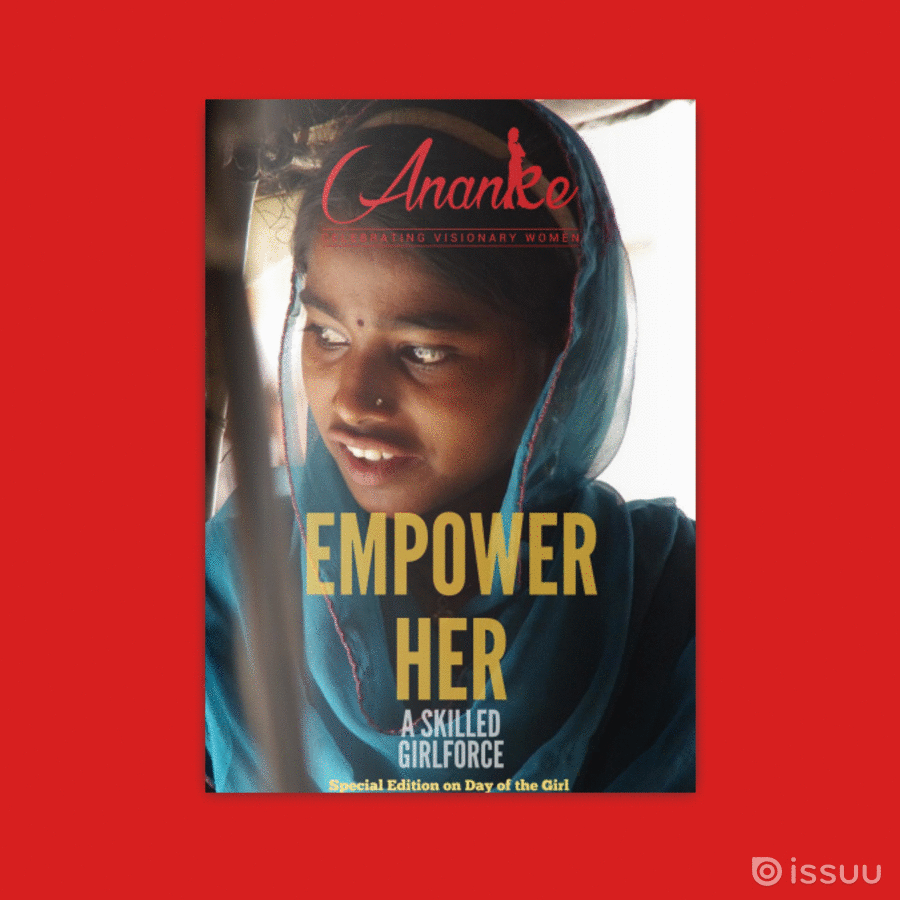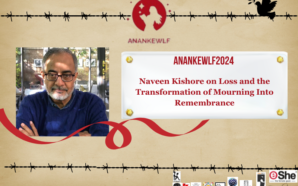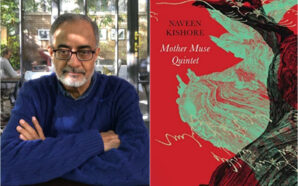It is an absolute pleasure to be here albeit digitally. I’ll begin with a brief introduction about my work. I founded Ananke in 2014 – a digital platform that empowers women through awareness, education and advocacy. We showcase visionary women as role models for aspiring women and girls to emulate and follow. With a gender lens, Ananke focuses on such issues and topics as violence, technology, health, climate change, and the SDGs.
 We are digital journalists, mentoring and training women and girls all over the world. To date, we have mentored more than 45 girls in the UAE (where we are based) to Australia, Pakistan, India, Belarus, China, and many African countries. Our mission is to provide safe access on a platform where individuals can have an open dialogue on important and sensitive topics such as human trafficking.
We are digital journalists, mentoring and training women and girls all over the world. To date, we have mentored more than 45 girls in the UAE (where we are based) to Australia, Pakistan, India, Belarus, China, and many African countries. Our mission is to provide safe access on a platform where individuals can have an open dialogue on important and sensitive topics such as human trafficking.
This brings me to our topic of discussion today: The several Rs of Trafficking, its Risks and Rewards. Keeping in mind our primary mission, I would like to take this opportunity to shed some light on human trafficking in the digital age. I will share a few stories that show the negative as well as the positive sides of the Fourth Industrial Revolution that technology brings to the 21stcentury.
Human trafficking is a highly lucrative and complicated crime that has made an impact on nearly every country in the world. It is estimated that over 40 million people in the world have been or are victims of one or another form of trafficking. This includes, but is not limited to bonded labor, transnational and illegal migration, beggary, forced marriage, child marriage and many more. With such a wide diversity of illegal activities, global profits soar to amounts of $150 billion every year. According to leading anti-slavery groups, most of the victims are women and girls who become trapped in this illicit trade.
With the dawn of the new digitized age of parallel realities – the physical and the virtual – another new and intricate layer of the internet has cast an ominous shadow on the fight against this illicit trade.
 My first story is set in my home country of Pakistan. There, more than a million victims are enslaved in one of the most pronounced form of human trafficking in the country, which is bonded labor, such as working in brick making, mining, carpet weaving or are sold off to other countries in a forced marriage, as a domestic or slave labor. This means almost 17 out of every 1,000 people in Pakistan live in the bondage of slavery, while 74 people out of every 100 are vulnerable to slavery.
My first story is set in my home country of Pakistan. There, more than a million victims are enslaved in one of the most pronounced form of human trafficking in the country, which is bonded labor, such as working in brick making, mining, carpet weaving or are sold off to other countries in a forced marriage, as a domestic or slave labor. This means almost 17 out of every 1,000 people in Pakistan live in the bondage of slavery, while 74 people out of every 100 are vulnerable to slavery.
Finally in 2018, after years of procrastination and half-baked efforts, two important acts were passed in Pakistan: “The Prevention of Trafficking in Persons Act, 2018” and “The Prevention of Smuggling of Migrants Acts, 2018”. These laws were drafted by the Federal Investigation Agency (the IFA) with the assistance from the United Nations Office on Drugs and Crime (UNODC). These laws impose long imprisonment terms as well as heavy fines on traffickers, handlers and their accomplices.
While some form of regulation and laws are in place, there are still huge questions when it comes to implementation. Case in point is the recently discovered organized trafficking activity. In April 2019, reports started trickling in about a bride trafficking racket, where girls belonging to minority communities – specifically Christians – were being taken to China under the guise of marriage. Arrested perpetrators included matchmakers and pastors who have reportedly solemnized 1200 marriages. News reports reveal that parents are bribed and/or lured into getting their daughters married off to a ‘rich man’ – the brides then migrate to China with their so-called husbands, in a bid to avert or avoid kidnappings, forced conversions as well as forced marriages in rural Sindh and Punjab provinces. These women are then forced into prostitution, and are held against their will. The issue was only brought forward a couple of months ago, with officials and the bureaucracy still keeping mum due to diplomatic reasons.

Marvi Awan
Speaking to one of the founding members of Pakistani NGO (Women’s Protection Cell) in the Southern province of Sindh – a region stricken with extreme poverty and illiteracy – Marvi Awan revealed that the organization has received 1136 cases in this year alone. These include blackmail, kidnapping, attempts of honor killing as well as human trafficking. According to Marvi, most of these cases involve the use of technology to perpetrate the crime. In many cases phone numbers could be traced, but as technology evolves, perpetrators become tech savvier. Once difficult to retain one’s anonymity, criminals are able to easily create fake IDs and have numbers that cannot be traced. One advantage security agencies do have in the country is NADRA – the National Database and Registration Authority,launched in March 2000. With a good biometric system in place, security agencies like the FIA and police have been able to work productively to nab perpetrators. While security agencies have been fairly successful in leveraging technology to counter organized crime, Marvi highlights yet another issue thanks to her working closely with the police. In a country with deeply entrenched patriarchal belief systems, where even raising awareness about domestic violence is frowned upon especially in rural areas of Pakistan, with its feudalistic legacy, security agencies (especially the Pakistani police force) still need rigorous training as far as gender sensitization, awareness about trafficking, its victims and most importantly – empathy is concerned. Marvi lamented and I unfortunately know from my personal experience living in Pakistan, what a colossal effort it is to instill empathy as well as dismantle the collective, rigid mindset based on set norms and taboos.
While doing my research for today’s session, I came across another interesting story I would like to highlight here. I recently had a highly informative chat with Ruth Juliet Nyambura Gachanja, an advocate of the Kenyan High Court, and an anti-human trafficking expert about the state of affairs in the country when it comes trafficking. Juliet started raising awareness about human trafficking in Kenya in 2012. It was a time when, according to her, even representatives of security agencies like the police, did not have any real inkling as to what trafficking was all about. To quote Juliet: “With blank stares, they would ask me what would the charge be especially when a girl working in the country has proper documents, they used to say, ‘What am I looking for?’ And I had to explain that these are 15 year old girls who are being held against their wishes and are working like slaves.”
Juliet has an impressive history of involvement in training and sensitizing the police force, and was also selected to be on the first advisory committee on human trafficking. This committee included training government officials and security forces while formulating a National Action Plan on human trafficking and child protection. She is an ambassador for Love Justice International, which has intercepted more than 200 victims on the Kenyan border, and played a pivotal role in releasing an Indian victim being trafficked to Kenya in a flesh trafficking activity. In another case, Juliet herself helped free 12 women from Nepal and India who were trafficked to Kenya under the guise of working in a restaurant but were actually living in solitary confinement, held against their will and victims of massive abuse.
 With the completion of the first National Action Plan, Juliet has been involved in formulating the second plan of action with more focus on new and smarter ways of combatting human trafficking particularly using digital technology. Although, according to her, NGOs did a fairly large share of work in finding ways and solutions to countering this organized crime by creating several databases of information about victims, the perpetrators, their location as well as from where victims are trafficked; the government has become more active putting in place not just laws such as the Child Protection Act, they have also created a biometric system and electronic signatures, where a mere swipe of the passport at the airport can identify victims. This is especially important because now even children have separate passports unlike before and therefore a potentially easier target for traffickers. To fight human trafficking, Juliet emphasizes the need to have control over employment agencies and immigration information. The government took a huge step when it cancelled licenses of over 1000 quack employment agencies involved in trafficking women and girls. The new Kenyan government policy demands registration with a million shilling bond. It resulted in about 90 employment agencies now legally operating while others that were sham have either gone underground or are out of business. With the new National Action Plan to be launched by the end of this month (July), the way forward is by leveraging digitalization and mapping human trafficking, says Juliet.
With the completion of the first National Action Plan, Juliet has been involved in formulating the second plan of action with more focus on new and smarter ways of combatting human trafficking particularly using digital technology. Although, according to her, NGOs did a fairly large share of work in finding ways and solutions to countering this organized crime by creating several databases of information about victims, the perpetrators, their location as well as from where victims are trafficked; the government has become more active putting in place not just laws such as the Child Protection Act, they have also created a biometric system and electronic signatures, where a mere swipe of the passport at the airport can identify victims. This is especially important because now even children have separate passports unlike before and therefore a potentially easier target for traffickers. To fight human trafficking, Juliet emphasizes the need to have control over employment agencies and immigration information. The government took a huge step when it cancelled licenses of over 1000 quack employment agencies involved in trafficking women and girls. The new Kenyan government policy demands registration with a million shilling bond. It resulted in about 90 employment agencies now legally operating while others that were sham have either gone underground or are out of business. With the new National Action Plan to be launched by the end of this month (July), the way forward is by leveraging digitalization and mapping human trafficking, says Juliet.
And this is where technology can play a great role. Some of the most disruptive forces of technology: Blockchain, Machine Learning and Artificial Intelligence can make a real difference. I shall talk about Blockchain in a bit, but let’s take a closer look at machine learning and artificial intelligence. There is a huge bulk of information out there, created by NGOs, governments etc. Simply put, once authenticated and verified, this information can be fed into machines – that is the basic explanation of what machine learning is. Once it is fed, through artificial intelligence, technology can not only map and study trafficking behavior it can also help identify and even pre-empt cases before they happen. Because through the data collected, machines are able to predict a crime before or as it happens. But there are many limitations to it as well, which I shall talk about in the end.
Another example worth presenting here is again from my own personal experience. I was selected as World Pulse’s Vision Mentor and I found out my mentee, Cecille Montenegro from the Philippines was trafficked to Japan at the age of 17. With no money and the lure of getting a great job as a migrant worker in Japan sounded too good an opportunity to miss, so with her handlers providing her with fake ID and passport she was sent to Japan in the year 2000. According to Cecille: “I worked in Japan as an entertainer in different places, in Tokyo, Osaka, Okinawa and Toyama from year 2000 up to 2005. Of course in five years working abroad and helping my family in the Philippines was really hard, I cried, laughed, almost went crazy all the time.” In 2006 she married the man responsible for trafficking her to Japan in the hope of somehow making her life better. Soon Cecille was subjected to the horrors of domestic violence. Unable to withstand any longer, she went to court, though unable to convey her pleas due to language barriers, she was awarded custody of her children. But it was not until 2010 that she could go back to her homeland. Ironically, Cecille was among the lucky ones. Soon enough she found out about Batis Center for Women – an organization that strives to assist Filipino migrant women who were victims/survivors of domestic violence, human trafficking, illegal recruitment, abandoned by their husbands or partners with their JFCs (Japanese-Filipino Children).
 For Cecille, Batis was just the push she needed, soon she came across World Pulse. An amazing platform that has played a critical role in empowering women through technology. She was eventually selected in World Pulse’s Advance Digital Changemaking Program and this is where we met. She being my mentee. Our six month mentoring relationship helped her launch her dream project Empowerment Through Art -which focuses on women – narrating stories about their strength and challenges on her Instagram page. Cecille is not just painting stories taken and learnt from her own life, she is now reaching out to global audiences of women, professional and amateur artists through the power of digital media. She herself is mentoring and empowering them to tell their own stories to help others.
For Cecille, Batis was just the push she needed, soon she came across World Pulse. An amazing platform that has played a critical role in empowering women through technology. She was eventually selected in World Pulse’s Advance Digital Changemaking Program and this is where we met. She being my mentee. Our six month mentoring relationship helped her launch her dream project Empowerment Through Art -which focuses on women – narrating stories about their strength and challenges on her Instagram page. Cecille is not just painting stories taken and learnt from her own life, she is now reaching out to global audiences of women, professional and amateur artists through the power of digital media. She herself is mentoring and empowering them to tell their own stories to help others.
The digital realm is just one aspect of how socially impactful technology could be. Blockchain is the buzzword today which is not just disrupting financial markets, it holds the potential of a solution that is not just sustainable, it is actually attainable.
The first time I came across the notion of leveraging blockchain for social good is when I was presenting a pitch at the TechStars Startup Program. My idea was to create a platform offering educated refugee women possessing a decent internet connection (even a cellphone) a digital workspace that would not require legal processes needed for physical presence at the workplace. It was there, someone suggested that I should look up how blockchain can help create identities for refugees.
What blockchain actually does is, it creates a virtual identity that is based on using our unique biometric information such as iris scans and finger printing etc. and so as a result we not only have paperless data, the need for having paper documentation ceases which means identity forgery/theft becomes an impossibility. I am no expert but let me explain as a layperson, how blockchain works is information is encoded in virtual blocks and is resistant to any modification unless all parties, creators are involved, verify and agree. It is like an open ledger which permits distribution of digital information but it cannot be copied and is extremely difficult to modify. But with every pro, there is a con. Blockchain like any other technology does have its limitations. Apart from Iris scans and finger prints, it can store every type of data available that means information collected needs to be from authentic sources especially the ones on paper which are being digitized. Other budgetary limitations include finding experts, time consumption etc. That said, Blockchain’s immutability can really be an enabling force to fight against trafficking as it becomes difficult for traffickers or employers to confiscate or steal identities and/or blackmail victims as the reliance of physical proof of identity becomes irrelevant.
 In conclusion, I would say that it is true that the vastness of technology especially the many digital forms of communication is like an unbridled horse that needs to be reined in, and checked because of the anonymity it offers. This of course also enables perpetrators to avoid police interception, it also allows illicit financial flows, offering accessibility to information and high profitability to criminals due to its speed.
In conclusion, I would say that it is true that the vastness of technology especially the many digital forms of communication is like an unbridled horse that needs to be reined in, and checked because of the anonymity it offers. This of course also enables perpetrators to avoid police interception, it also allows illicit financial flows, offering accessibility to information and high profitability to criminals due to its speed.
Technology’s immense potential can also paint a rosy picture for us but it doesn’t come without thorns – and a lot of them at that. The main source of creating any technological solution is based on collecting data, its authenticity, and the absence of any bias and stereotype and so forth. Any manipulation means a failure of the entire system or let’s just say a huge failure and a major setback. Another cause of concern is how invested stakeholders (the governments, public/private sector etc.) are and the motive behind. Digital privacy is a burning topic – an issue that needs transparency, iron-clad, gender sensitized policies that focus with a rights-based approach, among many other things. With a world where the likes of Facebook can sell your information or even government sites can be hacked, the approach needs to be disruptive, engaging all stakeholders with an outlook based on our fundamental human rights.
The fight to end human trafficking or any criminal activity needs a holistic approach to clamp down this ever burgeoning industry. Taking a page out of how borderless dynamism of the Internet organically operates through seamless connectivity and access beyond frontiers; the way forward is for all stakeholders to work together on rights-based, real world solutions such as trainings, workshops focusing gender sensitization and empathy, to policies that are not just inclusive, they are intersectional and instilling transparency to organically create the absence of hidden agendas. And, taking this approach to the next level by converging as well as incorporating these ideas onto our parallel reality and innovating positive impact through disruptive forces of technology such as blockchain, machine learning, artificial intelligence and most importantly the Internet of things – gadgets and other physical objects – to surveil, preempt and protect.











